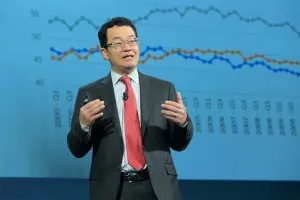Here in Washington, D.C., the debt ceiling debate continues, with the the deadline for a deal fast approaching. If there is no resolution and the U.S. technically defaults on August 2nd, then the unemployment rate could hit 9.5 percent by year-end, up from the current 9.2 percent. The employment conditions had made some progress with the unemployment rate dipping from a cyclical high of 10.1 percent in late 2009 to 8.8 percent in March of this year, but the very slow economic recovery is doing nothing to push down the jobless rate.
The higher unemployment scenario comes about from higher interest rates for everyone: governments at all levels, businesses, and consumers, including mortgage rates. If global bond investors of U.S. debt become skittish then the supply of loanable funds will shrink and higher interest rates will be required to woo bond investors.
So far, global bond buyers have shown absolute calm. The benchmark 10-year U.S. Treasury borrowing rate is only 3 percent, near historic lows.
By contrast, the borrowing rates by other sovereign governments are as follows:
Some of these differences are attributed to differing inflationary conditions in the respective countries. Japan's low borrowing cost is due in part to falling prices. Still a higher borrowing cost, for example Italy vis-à-vis Germany, shows the investors’ level of trust that Germany more than Italy will honor its debt commitments. Greece certainly made mistakes in the past, by offering way too many promises as related to government spending versus what the country could reasonably honor. There is no free lunch of easy promises.
Back to the United States. If there is no debt ceiling resolution then it is possible (though not certain) that U.S. interest rates will rise. If the 10-year Treasury borrowing cost goes up to 4 percent, with other no other economic news, then it will shave U.S. economic growth such that the unemployment rate could rise to 9.5 percent by year end.
More specifically, GDP growth in the second half could be in the 1 to 2 percent range. GDP needs to expand by 4 percent to make a steady, meaningful improvement to the job picture. GDP growth of about 2 percent essentially means a neutral economy with an unchanging unemployment rate. Growth of less than 2 percent means a higher unemployment rate. A fresh GDP figure for the second quarter will be released later this week, and I am afraid it could be as low as 1.5 percent. Continuing this pace of sluggishness will be very bad news for job hunters.








